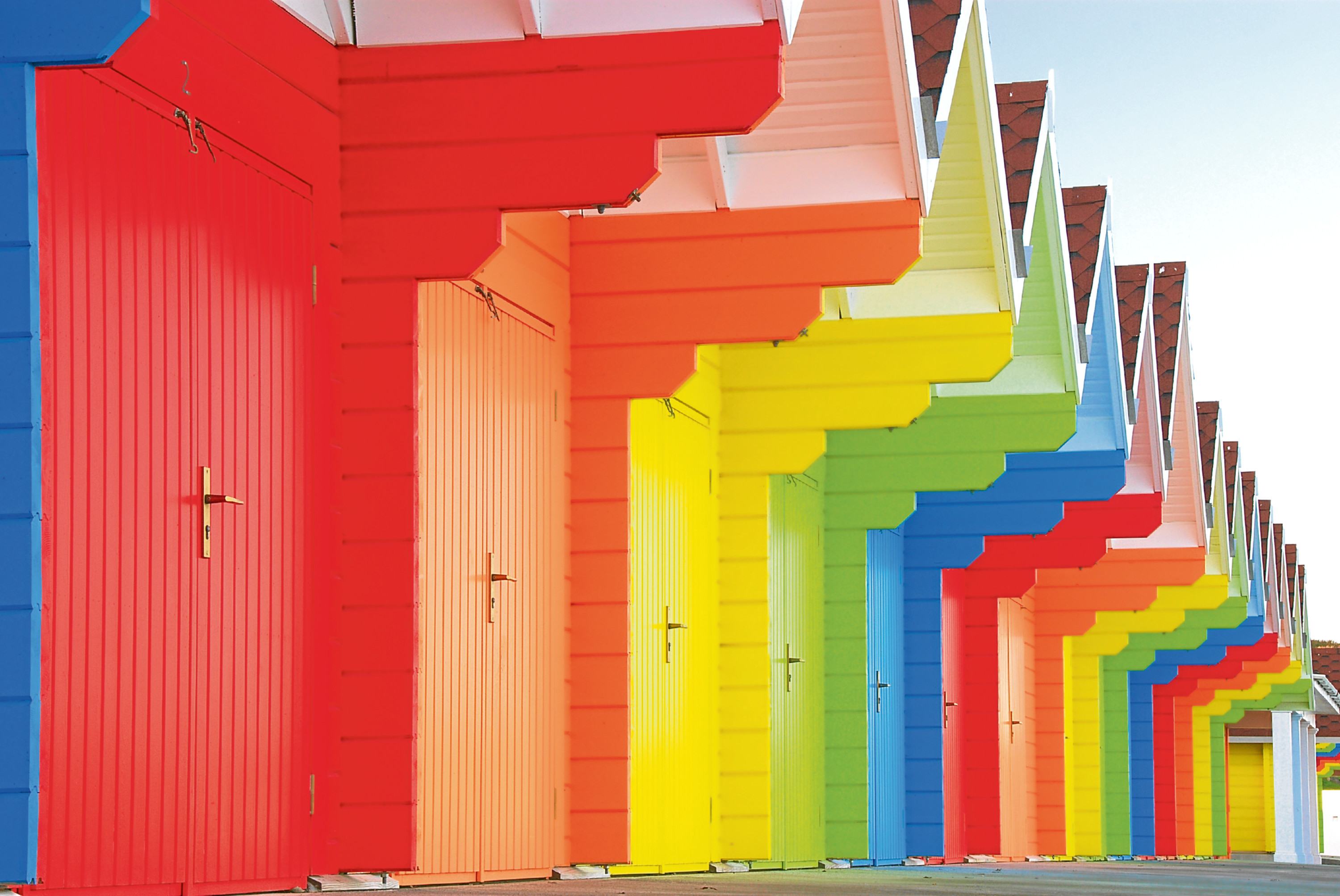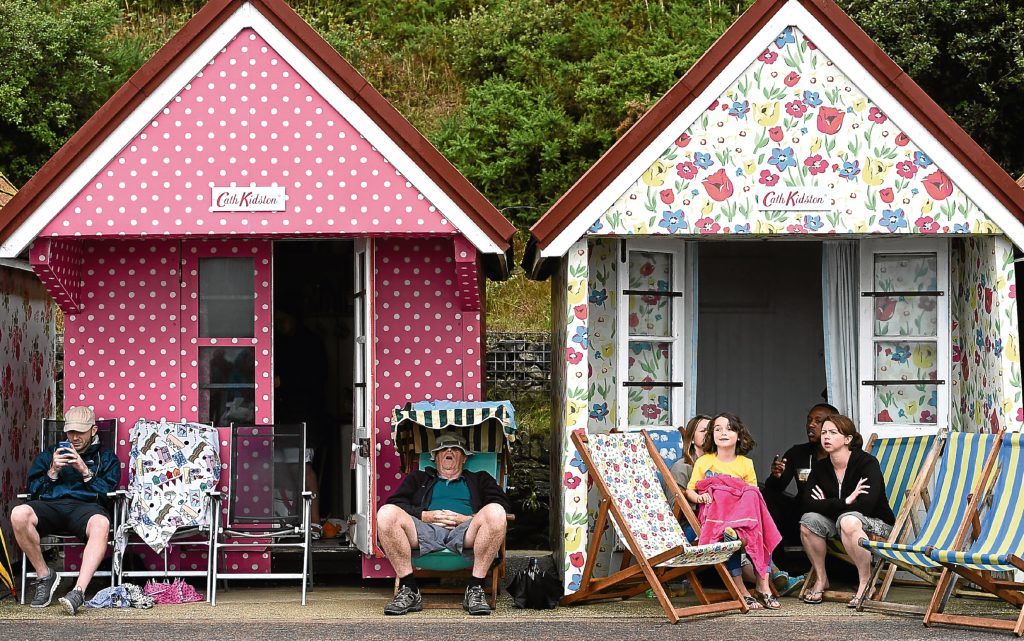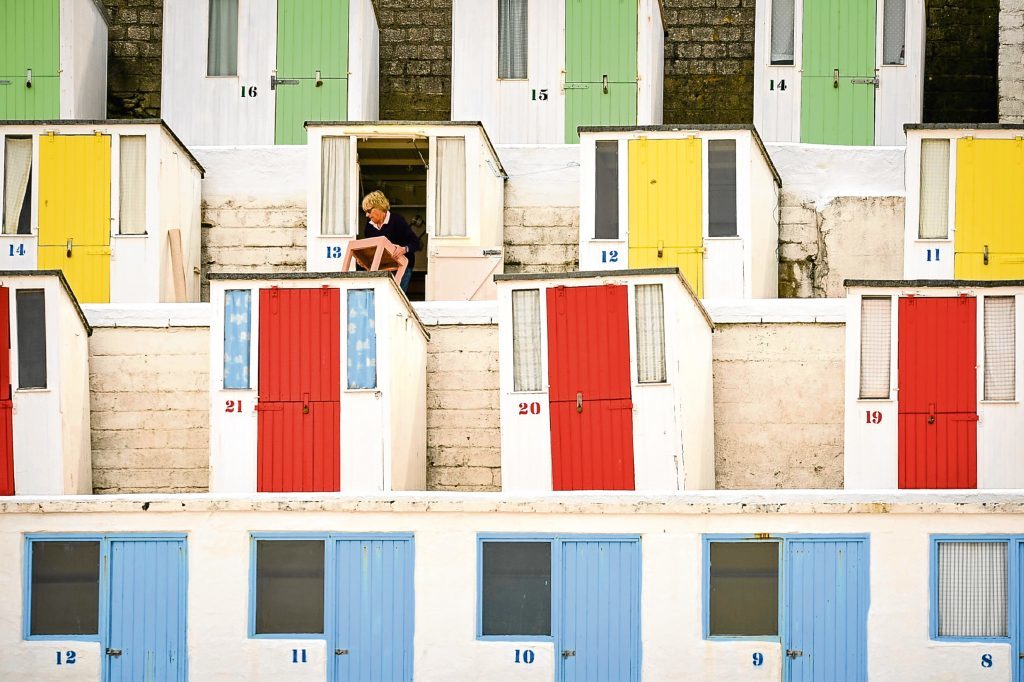
THERE are many reasons why we love our beach huts almost as much as our houses.
For one thing, we can let rip with the kind of eye-catching colours we might not dare at home — set by the beach, it’s only right that they are bold and bright.
For another, we equate our beach huts with blissful work-free holidays, taking the sun and lazing around on the golden sands.
Little wonder, then, that we British have a long and lovely history of beach huts, although as author Karen Averby explains, there was a time when British beaches saw almost no holidaymakers.
“From the 18th century, the beach changed from a place for fishermen and smugglers to a fashionable place where the wealthy could recover from illness,” says Karen, who has written a book about British beach huts.
“In the 19th century, the coming of the railways and the introduction of holidays for workers made the coast increasingly popular.
“A growing demand for entertainment and accommodation led to the birth of the seaside resort.”
The great indoors: Beach lovers fork out £25,000 for Scottish seaside beach huts
And with it, of course, came the small huts where we could change into our swimsuits, have an hour out of the sun, grab the flask and sarnies and get the sand out from between our toes.
The cute little multi-coloured huts, in a neat terrace, at Cromer in Norfolk were built in 1912 and are among the earliest, rarest surviving examples of planned beach hut facilities.
But how many does the UK have in total?
“It’s estimated there are at least 20,000 beach huts located at Britain’s various resorts,” says Karen.
“There are terraced huts, huts on stilts, one with porches or platforms, and some made of brick and concrete.
“Scarborough was one of the earliest seaside resorts and had developed from the 1720s, although it had been visited as a spa town since the 17th century.
“Nude sea bathing, already practised at Brighton and Scarborough, was initially commonplace.
“However, although men continued to bathe naked until the 1870s, it became increasingly common for women to wear bathing attire.
“A perceived need for privacy while bathing led to the appearance of bathing machines.”
In the days where Brits were more shy about nudity, they came up with contraptions to hide in.
Once in your bathing machine, you would prepare to get in the water, a horse would pull the machine out into the water, and you’d jump in from there, your modesty covered.
The machines, of course, would soon be replaced by the beach hut itself.
“Their architectural form reflects their simplicity,” says Karen.
“At its most basic, it’s adequate for providing shelter from the elements, refuge from fellow-beachgoers, a changing-room to slip in and out of swimwear, storage space for towels, reading materials and stashes of drinks and snacks.”
Although beach huts haven’t been modernised beyond all recognition, you do find them these days with such luxuries as a microwave, comfier padded seats, perhaps a few cupboards and shelves.
Otherwise, given the lack of space and the simple requirements of someone after a tan and a laze about, they don’t really need much else!
“Specifications soon became more uniform, dictated by councils for their own stock as well as privately-owned structures,” Karen points out.
“At some resorts, beach hut designs were submitted to the planning department.
“The oldest public municipal hut is at Undercliff Drive, Bournemouth, 150 metres east of Bournemouth Pier.
“Built in 1909, hut humber 2359 was commemorated with a blue plaque.”
It’s no surprise that in the inter-war years, Britons flocked en masse to our beaches, and it was something of a golden age for seaside architecture.
“In Somerset, Weston-super-Mare’s late 1920s Marine Lake development was built to provide a safe, shallow beach where the tide was always in,” Karen continues.
“It incorporated the Winter Gardens and Pavilion, which opened in 1927.
“At Tinside, Plymouth Hoe, improved swimming facilities were developed from 1913, culminating with an Art Deco lido that opened in 1935.”
Not only were they kitted out with all mod cons, beach huts were also becoming things of beauty, miniature palaces that architects would flock to see and try to improve.
Some civic leaders loved things to be neat and uniform, and people would go to great lengths to change their minds.
“Until the summer of 2016, the beach huts at Appleby, Ryde in the Isle of Wight, were painted green,” Karen explains.
“Following a campaign by a local councillor and the majority of owners, a new rule decreed that they may be repainted in any colour . . . except for black.”
n Beach Huts, by Karen Averby, is published by Amberley, ISBN No. 978-1-4456-6574-0, priced £8.99.

Enjoy the convenience of having The Sunday Post delivered as a digital ePaper straight to your smartphone, tablet or computer.
Subscribe for only £5.49 a month and enjoy all the benefits of the printed paper as a digital replica.
Subscribe
